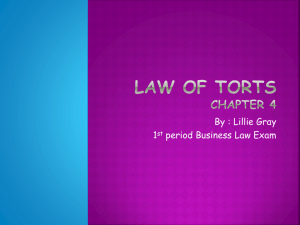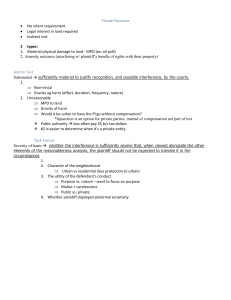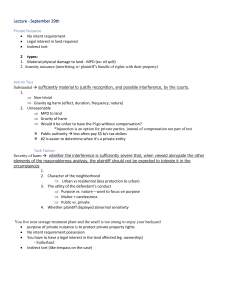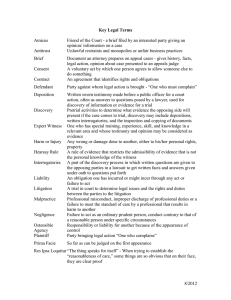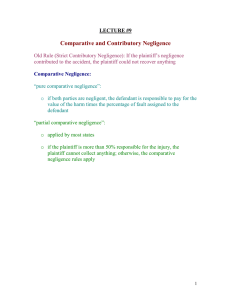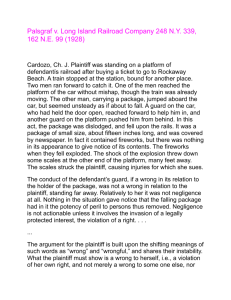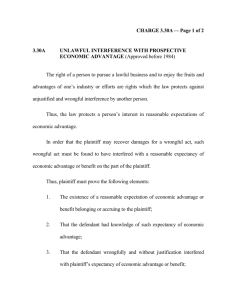The Law of Torts - Galena Park ISD Moodle
advertisement
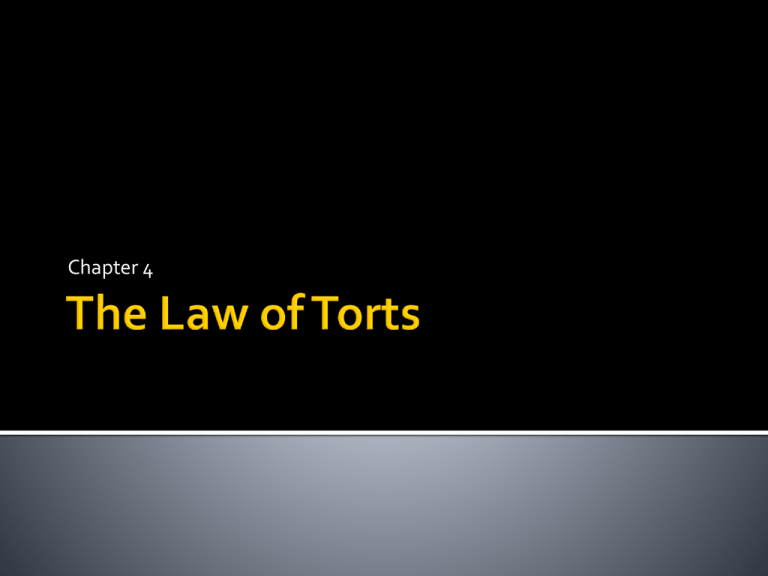
Chapter 4 Crime- harm not only specific individuals but also the general welfare Tort- private wrong committed by one person against another Intentional Tort-when a person who commits an unintentional tort does not have this mental determination Assault- threatening to strike or harm with a weapon or physical movement resulting in fear Battery- Unlawful, unprivileged touching of another person Trespass- Wrongful injury or interference with the property of another Nuisance- Anything that interferes with the enjoyment of life or property Interference with contractual relationsIntentionally causing one person to break or refrain from entering a contract with another Deceit- False statement or deceptive practice done with intent to injure another Conversion- Unauthorized taking or borrowing of personal property of another for the use of the taker False Imprisonment(false arrest)- unlawful restraint of a person, whether in prison or otherwise Defamation- Wrongful act of injuring another’s reputation by making false statements(libel & slander) Libel- false statement in written or print Slander- false statement orally to a 3rd party Invasion of privacy- Interference with a person’s right to be left alone Misuse of legal procedure- Bringing of legal action with malice and without probable cause Infliction of emotional distress- Intentionally or recklessly causing emotional or mental suffering to others Negligence- Injury that is caused by a person’s mere carelessness Strict Liability- injury caused by an individual’s participation in ultra hazardous activity Breech of duty- the duty to care towards a person or company and fail to live up to that standard (Reasonable Person Test) Proximate cause- legal connection between unreasonable conduct and the resulting harm Contributory negligence- behavior by the plaintiff that helps cause his or her injuries may fall under this doctrine Comparative negligence- the negligence of each party are compared and the amount of the plaintiff’s recovery is reduced by the % of his or her negligence. Assumption of risk- If the defendant can show the plaintiff knew of the risk involved and still took the chance of being injured he or she may claim this as a defense
